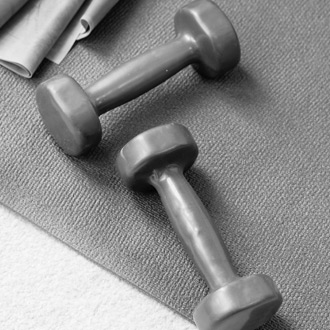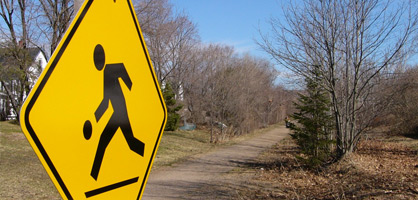stay physically active
in Montreal
Residents and visitors have plenty of options for exercise and sports activities during the winter...
Montreal takes pride in having a host of sports facilities to keep you healthy and in good shape...

There are plenty of options to play soccer in summer time...
There are plenty of opportunities to get physically active and fit in Montreal to stay healthy ...
Many personal trainers work for sports teams, community centers, gyms, resorts and spas, cruise companies, and so on. Some fitness trainers choose to work for themselves. The good news is that it is not difficult to start a personal trainer business in Montreal, but there are some things to consider, including licenses and permits, financing, business plan, location.
To work as a fitness or personal trainer, you may need recognized certification as well as personal training insurance. You will obtain the National Council on Strength and Fitness Certification to work as a certified fitness trainer.
A good location for your personal trainer business is obviously a busy downtown area with high foot traffic. Or you may choose a location close to office buildings or residential areas. Alternatively, you can work in private homes, schools and universities, hotels and resorts, health clubs, and gyms. When it comes to equipment, you will need things like cones, jump ropes, foam rollers, agility ladder, stability straps, resistance bands.
You can choose from a number of different sources of financing for your personal trainer business, including peer to peer networks, credit unions and banks, the Canada Small Business Financing Program. Banks and credit unions offer different financial products, including business and start-up loans, secured loans, standard and specialty business credit cards, and more. The Canada Small Business Financing Program is one option to look into when looking for a low-cost loan. Keep in mind that there are eligible and non eligible expenditures under the program. Examples of noneligible expenditures include things like barters and exchanges, vendor take back financing, shares, pre-existing term loans, borrower's labor, click here. Such ineligible expenses are personal vehicles, training costs, survey costs, professional fees, and printed materials. The same goes for prepaid expenses, permits and licenses, feasibility studies, and building permits. Loans under the program are offered with fixed and floating interest rates. Applicants are asked to pay administration and registration fees. Another option is to apply with a local bank or a credit union. All big Canadian banks offer secured and unsecured business loans, including CIBC, RBC, Bank of Montreal. Big banks offer commercial mortgages, business loans, small business homeowner lines of credit, U.S. dollar and operating credit lines, and other financial solutions. Peer to peer networks also offer financing to business owners, and often the rates are competitive. Other options to finance your start-up are installment loans, fixed-rate term loans, business cards with high credit limits, and of course, self-financing: check here
The main sections of a business plan include products and services, owner’s background, executive summary, marketing strategy and market research, and others. In your market research section, you want to focus on things like your competition, potential and target customers, etc. It is also a good idea to highlight your strengths, for example, a high-quality exercise program, convenient and customized scheduling, modern equipment, and others. List basic techniques that will benefit your customers, for example, shoulder press, push jerk, push press, pull-ups, sit-ups, clean, and squat. Other sections to include in your plan are the funding required, financial plan, management, strategy and implementation, location and facilities, SWOT analysis, and trends.

The city has sports complexes, centres, stadiums, state parks, and outdoor rinks and arenas. Speaking of swimming pools, the city has a total of 117 play fountains, 109 wading pools, 74 outdoor pools, and 48 indoor pools. There are plenty of municipal gymnasiums and stadiums as well, examples being the Montreal Soccer Stadium, Complexe sportif Marie-Victorin, Complexe récréatif Gadbois, Centre Pierre-Charbonneau, and many others.

Parque Olympique has plenty to offer, from competition and diving pools to water-polo and synchronized swimming pools and wading, training, and relaxation pools. There are sports areas as well, including multipurpose rooms, a gym and a small gym, and a spinning room. The multipurpose rooms are ideal for exercise and activities such as Zumba, yoga, aerobic classes, and fitness training. The small gym is also perfect for sports activities such as Zumba, yoga, aerobics, fitness training.

Residents and visitors alike are free to practice soccer in soccer fields around Montreal, including Parc Mont-Royal, the McGill Campus, Field Soccer D'Ecole Mont-Royal, Parc Lafontaine, and others. When it comes to hiking, there are many options as well. The best places for hiking around and in Montreal are the Bois-de-Liesse nature park, Parc Jarry, Bois de Belle Riviere.